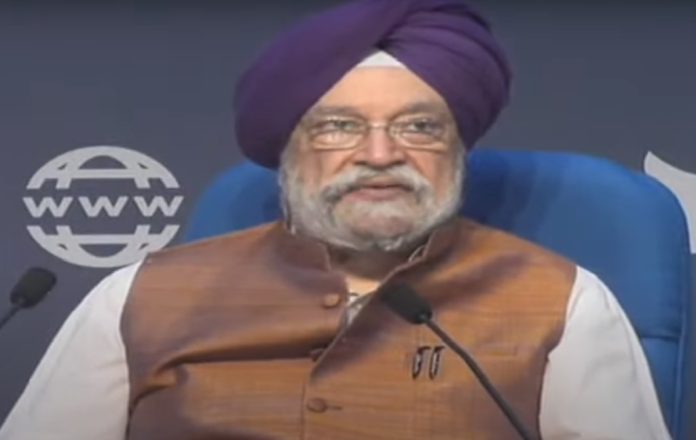In a major step taken by the Government, domestic air travel is all set to commence operations starting May 25, 2020. The Ministry of Civil Aviation (MoCA) has cautiously chalked a strategy to restart services with a new set of guidelines and SOPs which has been discussed with all the stakeholders.
Hardeep Singh Puri, Minister of State (I/C), Ministry of Civil Aviation said, “We need to have a balance between life and livelihood during this crisis situation. I think we have come to a time where we need to open domestic civil aviation. After we announced yesterday, we have put up the new SOPs on the Ministry’s website and have shared it with all stakeholders. A very comprehensive process has been undertaken which involved all our stakeholders including; airlines, airport authority, security, etc have all agreed. Starting Monday May 25, we will recommence domestic civil aviation in a calibrated manner.”
In terms of capacity, MoCA has announced that in metro cities including; Delhi, Mumbai, Bengaluru, Chennai, Hyderabad and Kolkata, flights will be allowed to operate one-third of their capacity. While in the metro to non-metro cities and vice-versa, where the weekly departures are more than 100, each flight can operate one-third of its capacity. For all other cities, airlines are free to operate on any route on one-third of its capacity. These restrictions do not apply for UDAN flights that operate under the regional connectivity scheme. He further said, “By calibrated manner we mean that we will operate to a limited extent of the required and approved capacity of summer schedule of 2020. Metro to Metro will be 33.33% of the approved summer schedule. For Metro to Non-Metro, where weekly departure is greater than 100, 33.33% of the summer schedule. Metro to Non-Metro, where weekly departures are below 100 weekly flights, operators can operate any route in the 1/3rd capacity. All other cities operators can operate any routes in the 1/3rd.”
Besides there have been a lot of uncertainty regarding the quarantine policy. The Minister has said that as of now there will be no quarantine post travel as it is domestic travel and we are taking enough preventive measures.
As the capacities have been reduced to a third, there will be a high demand with limited supply, thus creating a demand-pull inflation. There will be a skyrocketing of airfares due to this pent-up demand. To further regulate airfares, MoCA has introduced various band fare measure. The Ministry has divided the domestic aviation routes under seven bands; A] flight duration less than 40 mins, B] 40 mins to 60 mins, C] 60 mins to 90- mins, D] 90 mins to 120 mins, E] 120 mins to 150 mins, F] 150 mins to 180 mins, G] 180 mins to 210 mins. The ticket fare for each band will have a minimum and upper limit.
Speaking about the fare bands Pradeep Singh Kharola, Secretary-Civil Aviation, Government of India said, “We have categorized all routes into seven categories. As an example of the fare band, Delhi-Mumbai is the densest route in the country. In this case of Mumbai-Delhi route the lower fare is set at Rs. 3500 and highest is Rs. 10,000. To make it more efficient, we have a second rider that is 40 per cent of the seats must be sold under the mid-point of the band, which means will be less than Rs. 6700. This is a temporary formulation as there is a huge amount of pent up demand. This fare will be applicable till 11.59 pm on August 24.”
Puri added, “We have studied airfares structure and also looked at corresponding rail fares. We want air travel to be affordable and all citizens. We are the world’s third largest domestic civil aviation sector and we have to bounce back and gradually become the first. We are also conscious of the fact that airline is working on thin margins, so we have kept them in mind while drafting. This is not fare fixation in the normal time. We will have a limited flight in this period and there is a chance of high fare due to the tremendous demand. Once we exit from these three months period, we can return to status quo ante of the pre-covid scenario or as per market situations.”
Also, initially there have been a lot of discussions pertaining the empty middle seat for social distancing. In an earlier statement, International Air Transport Association (IATA), was not in favour of this move as it would drastically reduce the load factor and will change the dynamics of aviation. MoCA has reiterated that the middle seats won’t be kept empty.
Puri said, “If we keep the middle seat empty, still the social distancing requirement will not be met. Nowhere in the world this has been perceived as an important regulation. The system of not keeping middle seat empty has worked for us during the Vande Bharat mission as we have taken other preventive measures. But if we leave middle seat vacant the economics of the airlines and dynamics will change.”
To read the entire guidelines published by the Ministry of Civil Aviation click here.








